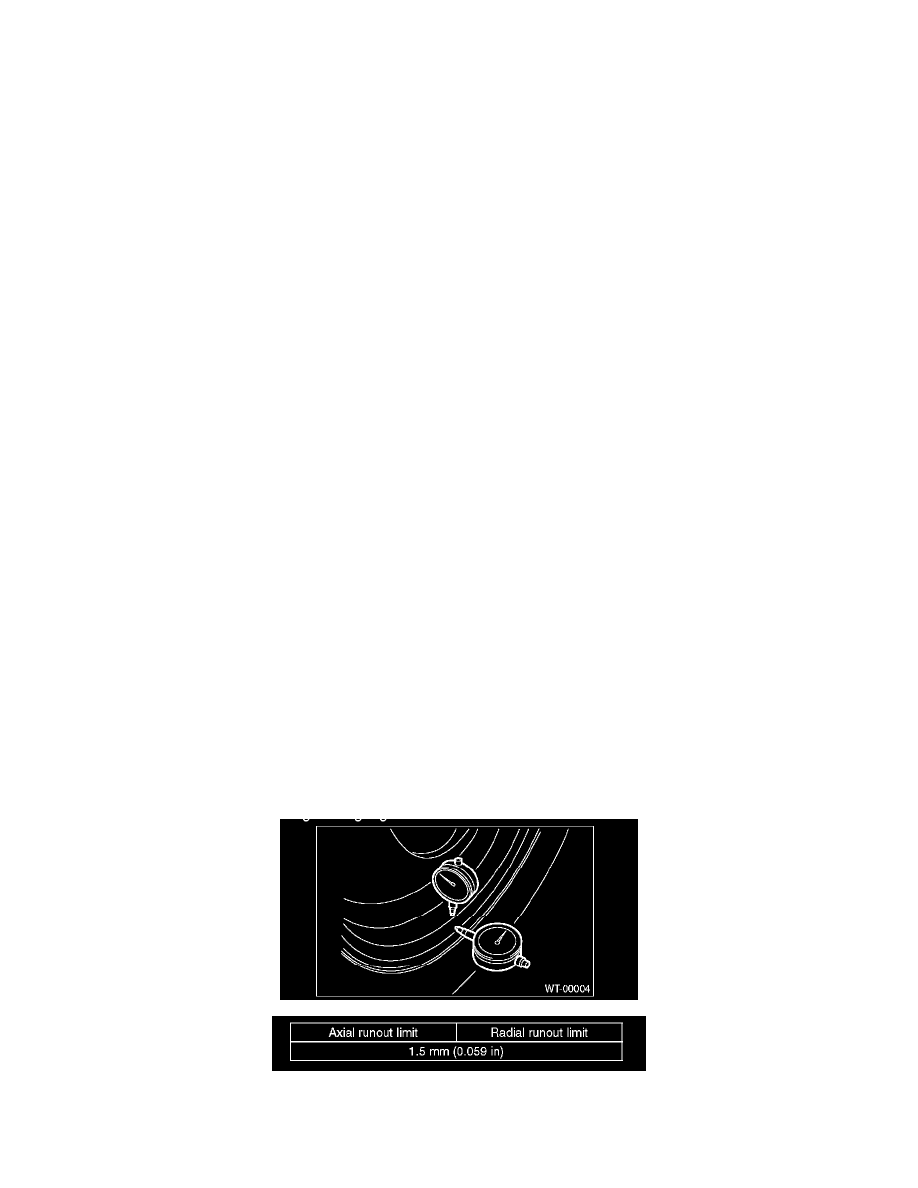Impreza F4-2.5L (2008)

Wheels: Service and Repair
Steel Wheel
Removal
Steel Wheel
REMOVAL
1) Apply the parking brake, and position select lever or shift lever to "P" range (AT model) or "1st gear' (MT model).
2) Set the shop jacks or a lift to the specified points, and support the vehicle with its wheels slightly contacting the floor.
3) Loosen the wheel nuts.
4) Raise the vehicle until its tires are off the ground using the jack or a lift.
5) Remove the wheel nuts and wheels.
NOTE:
^
When removing the wheels, be careful not to damage the hub bolts.
^
Place the wheels with their outer sides facing upward to prevent wheels from being damaged.
Installation
Steel Wheel
INSTALLATION
1) Remove dirt from the mating surface of the wheel and brake rotor.
2) Attach the wheel to the hub by aligning the wheel bolt holes with the hub bolts.
3) Temporarily attach the wheel nuts to the hub bolts. (In the case of aluminum wheels, use SUBARU genuine wheel nuts for aluminum wheels.)
4) Tighten the nuts by hand, making sure the wheel hub hole is aligned correctly to the guide portion of hub.
5) Tighten the wheel nuts in a diagonal selection to the specified torque. Use a wheel nut wrench.
Wheel nut tightening torque: 100 N-m (10.2 kgf-m, 73.8 ft-lb)
CAUTION:
^
Tighten the wheel nuts in two or three steps by gradually increasing the torque on opposing nuts, until they reach the specified torque.
For drum brake model, excess tightening of wheel nuts may cause wheels to "judder".
^
Do not push the wrench by foot. Always use both hands when tightening the nuts.
^
Make sure the bolt, nut and the nut seating surface of the wheel are free from oil.
6) If a wheel is removed for replacement or for repair of a puncture, retighten the wheel nuts to the specified torque after driving 1,000 km (600
miles).
Inspection
Steel Wheel
INSPECTION
1) Deformation or damage to the rim may cause air leakage. Check the rim flange for deformation, cracks or damage, and repair or replace as
necessary.
2) Jack-up the vehicle until tires clear the floor.
3) Slowly rotate the wheel to check rim "runout" using a dial gauge.
4) If the rim runout exceeds specifications, replace the wheel.
